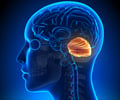A new technique has been developed to identify and localize the presence of tiny iron oxide particles associated with neurodegenerative disorders, more specifically Alzheimer's. The finding could eventually pave way for the development of a first real time diagnostic procedure for Alzheimer's.
The identification is based on equipment called synchrotron, (a device that accelerates electrons to produce high intensity X-rays). The equipment has numerous applications in the physics related experiments. The researchers from University of Florida incorporated lenses and mirrors to the usual set up to enable analysis of brain tissue. The depth of examination and precision are main advantages of this device.The electron microscope can provide adequate resolution of 1 micron (1/1000th of a centimeter). The new device can allow identification and subsequent examination of particles as small as 200-300 microns in size. 'It's the equivalent of being up in an airplane, looking at the city of Tampa, and telling you whether there is a penny there or not. And then once we zoom in, we can tell you what kind of penny it is,' remarked Dr. Davidson, one of the senior researchers.
Diseases such as Alzheimer's, Parkinson's and Huntington's affect millions worldwide and pose a significant strain on the financial resources. The number is only expected to increase in the forthcoming years. All these diseases share some common features such as dementia and physical impairment. It is also known that specific brain regions afflicted with the above-mentioned disorders are likely to contain elevated levels of iron oxide and other iron particles.
Currently, the role of iron in neurodegenerative disorders is poorly understood. It is known that iron is essential for normal functioning of the brain. Consistent with the above fact, small amounts of iron is present in healthy brains as well.
It is unclear if iron causes such disorders or iron deposition is a characteristic symptom of the same. The new technique could accelerate research on the cause of such neurodegenerative disorders.
Conventional methods used for identification of such iron particles rely on staining of tissue sections. The disadvantage of these methods is that it does not highlight the presence of specific compounds of iron. In addition, it is also not possible to relate iron compounds to specific regions of the brain.
Advertisement






